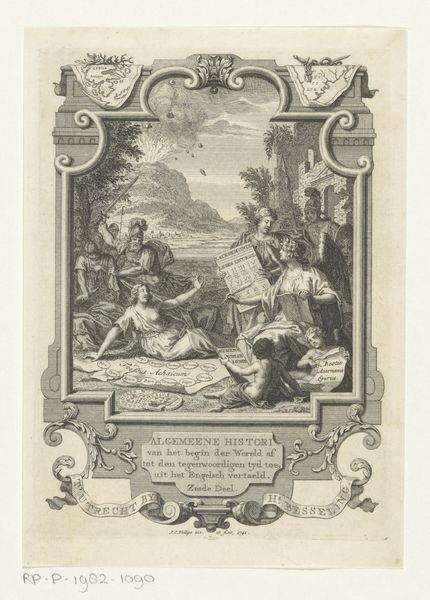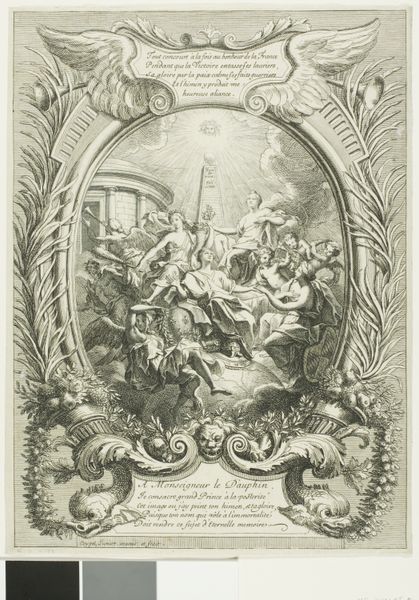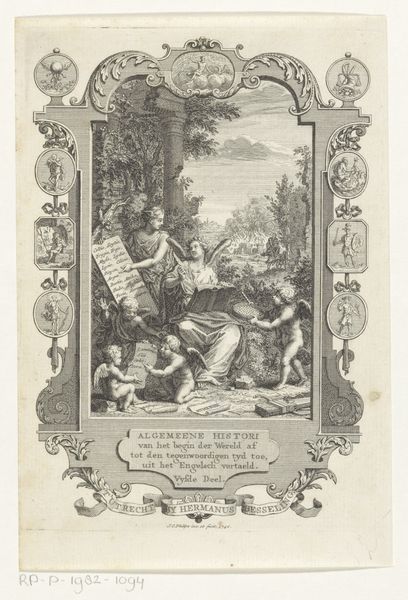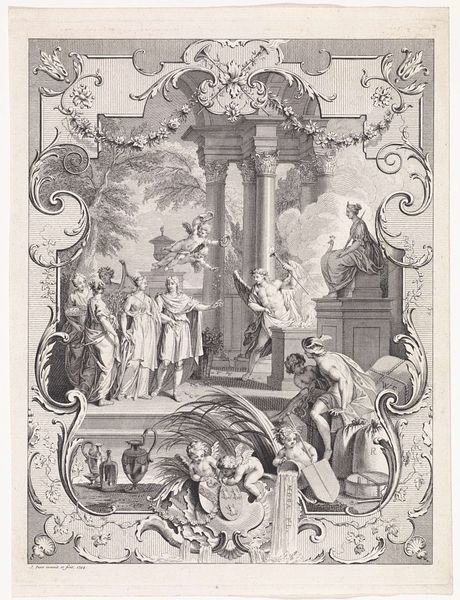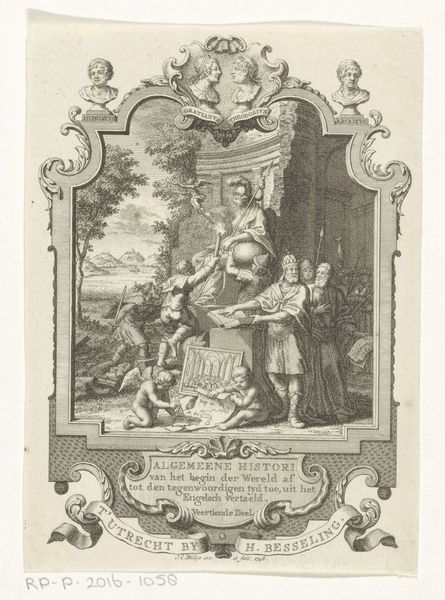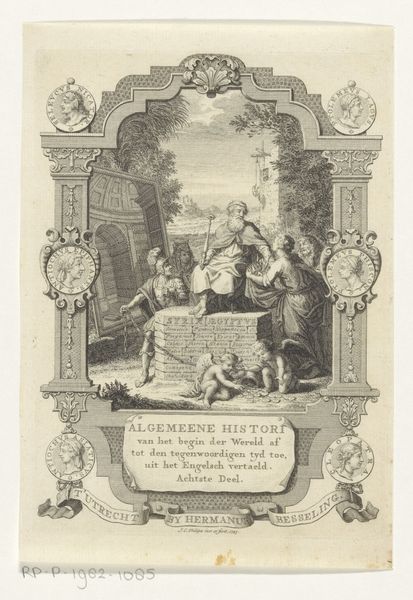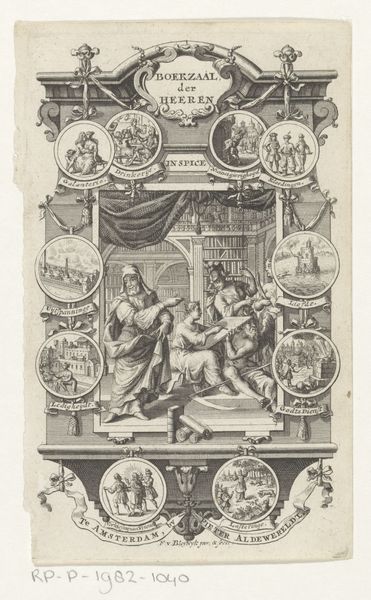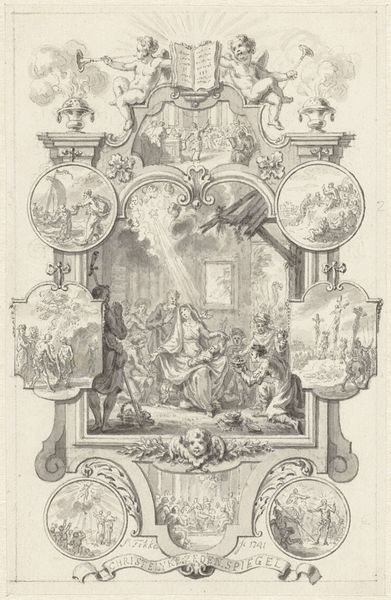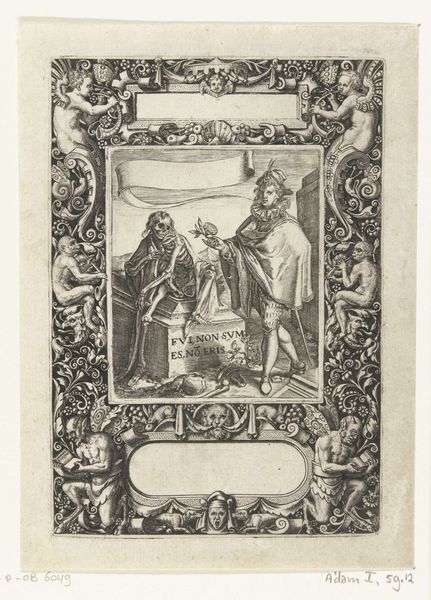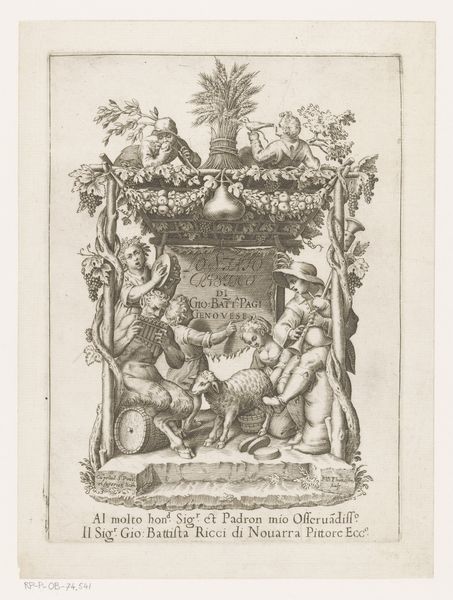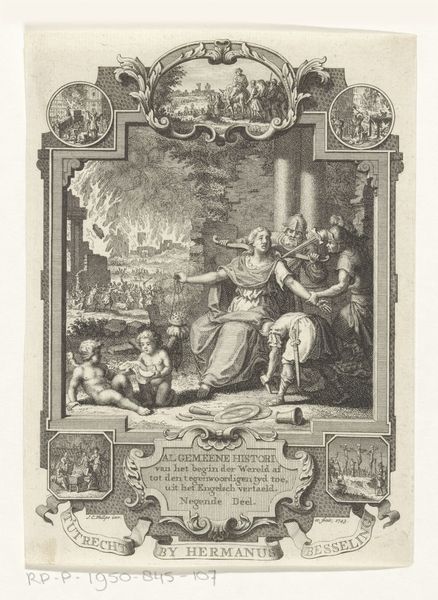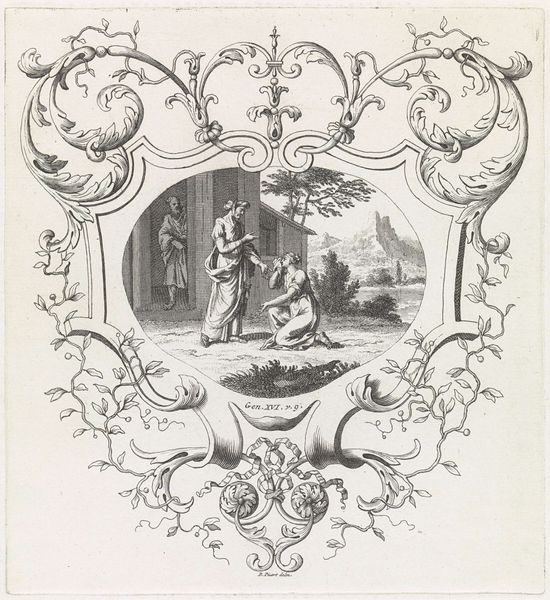
print, engraving
#
portrait
#
allegory
#
baroque
# print
#
pen illustration
#
old engraving style
#
classical-realism
#
figuration
#
romanesque
#
line
#
history-painting
#
academic-art
#
engraving
Dimensions: height 173 mm, width 123 mm
Copyright: Rijks Museum: Open Domain
Curator: Welcome. Today, we are examining a print called "Cartouche met allegorie op de Romeinse heerschappij," or "Cartouche with allegory on Roman rule," made in 1746 by Jan Caspar Philips. It resides here at the Rijksmuseum. Editor: My first impression is a stark image, almost monochromatic. It looks like an etching, or an engraving. The figures feel staged, poised between classical grandeur and something more… unsettling. There’s an air of theatricality, but with undercurrents of potential violence, somehow. Curator: It’s fascinating you say that. Contextually, prints like these often served multiple purposes. They functioned as illustrations in books, disseminating knowledge, but also as visual propaganda, reinforcing dominant ideologies. In this case, it frames the concept of Roman rule within a particular… heroic lens. Editor: Yes, and looking closer, I notice how those medallions, each framing the face of an Emperor, act like witnesses, confirming a line of succession. There’s an attempt to connect the past directly to the viewer’s present through historical narrative, but filtered through an explicitly patriarchal, imperial vision. Curator: Precisely. Notice, too, how Philips positions the central figures. There’s the Emperor enthroned above, elevated, dominating the visual field, while others—presumably conquered peoples—grovel below. Power is visually and spatially codified. What could that mean at this specific moment in Dutch history? What are its implications today when we study those kinds of relationships between civilizations, or rulers and their subjects? Editor: The babies amongst the grovelling figures, one grabbing handfuls of what looks like money or golden objects… It raises many disturbing questions, really, about what gets sacrificed, what's extracted to uphold power, or what becomes idealized as 'heroic’. I keep seeing links between historical depictions like this, with the justification of modern forms of dominance or economic exploitation. Curator: The symbolism runs deep here. Philips draws from classical tropes to craft a narrative not just about Rome, but implicitly about authority itself. Thinking about the way baroque style often blends theatrical drama with political messaging, this print invites us to consider whose stories are being told, who benefits from that storytelling, and at what cost. Editor: It becomes an entry point, doesn't it? Seeing how image is designed not just to show the facts but actually *shape* how those facts are perceived, even centuries later. Curator: Absolutely. Hopefully, this brief examination allows us to rethink how artworks operate as sites of cultural and historical negotiation. Editor: Yes, to not take such constructed power for granted, and keep asking "who is served?".
Comments
No comments
Be the first to comment and join the conversation on the ultimate creative platform.

